Transconjunctival lower-eyelid approaches
1. Overview
Transconjunctival lower-eyelid approaches are performed in several ways.
A) Transconjunctival (inferior fornix transconjunctival using a retroseptal or preseptal route)
B) Transcaruncular (=medial transconjunctival)
C) Transconjunctival with lateral skin extension (lateral canthotomy/”swinging eyelid”)
D) Combination of inferior (A) and medial (B) transconjunctival
E) C-shaped incision (ie, Combination of inferior (A) and medial transconjunctival (B) plus lateral skin extension (C))
The advantage of transconjunctival incisions is the superior cosmesis due to lack of a cutaneous scarring. A disadvantage maybe a limited access of non-extended or non-combined approaches in comparison to lower-eyelid skin incision.
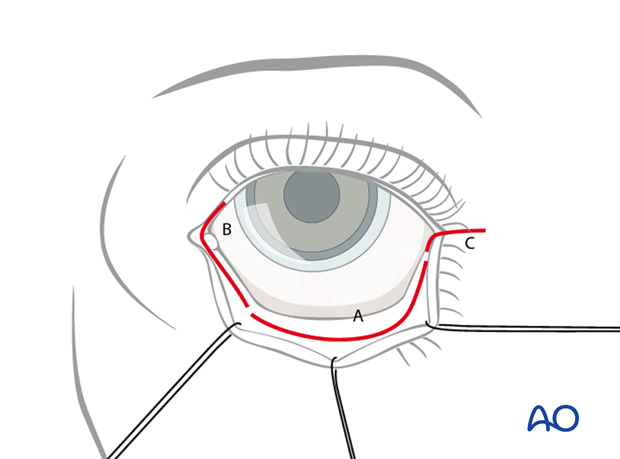
2. Access areas
The typical (lower fornix) transconjunctival approach in the lower eyelid exposes the floor of the orbit and infraorbital rim as well as the upper edge of the anterior maxilla (A).
Via a pre- or transcaruncular incision, the medial wall of the orbit behind the posterior lacrimal crest can be exposed (B).
The combination of the lower fornix and the medial transconjunctival approach provides access to both previously mentioned areas at a time.
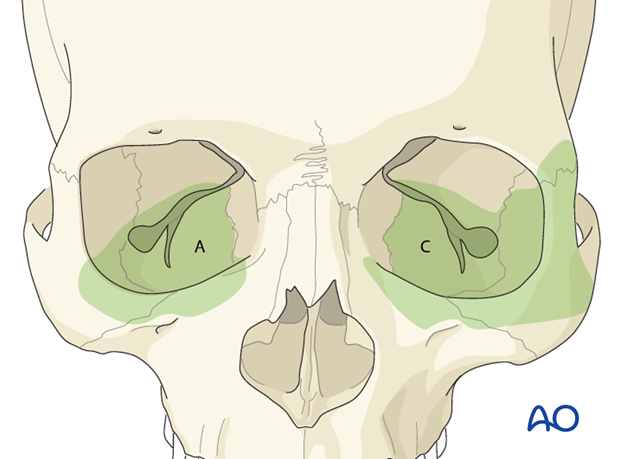
Extensions:
• Lateral Skin / Lateral Canthotomy (“Swinging Eyelid”)
If a canthotomy is performed in conjunction with the lower fornix transconjunctival approach, the lateral orbital rim and wall can additionally be accessed (C).
• C-shaped Incision
The C-shaped incision combines the medial and inferior transconjunctival approach with the lateral canthotomy and provides the maximal exposure of the medio-inferolateral orbit and the zygomatic body.
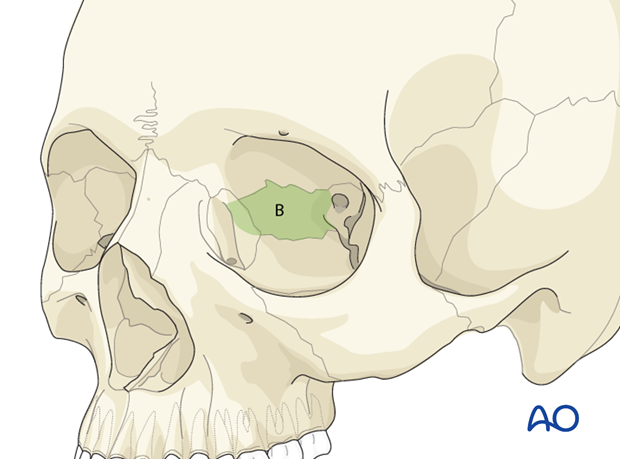
3. Complications
Transconjunctival approaches demand surgical precision in execution because several complications can occur:
- Damage and abrasion to the cornea
- Damage to extraocular muscles
- Eyelid malposition
A thorough evaluation is essential to choose the appropriate lower eyelid approach (eg, a snap-back test to assess the laxity of the eyelid).
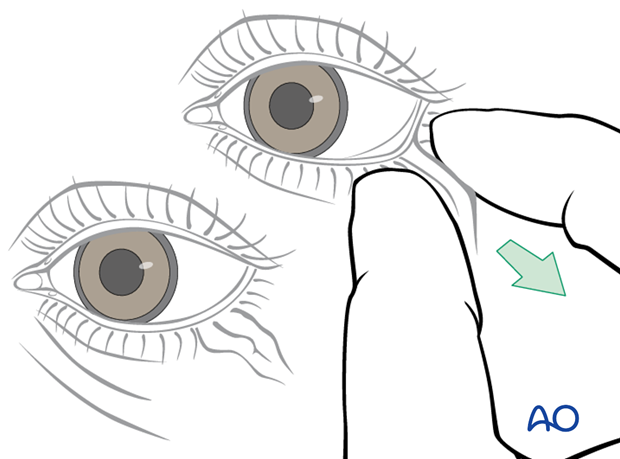
4. Vasoconstriction
Vasoconstrictors can be used to the preference of the surgeon according to the location of the various incision lines.

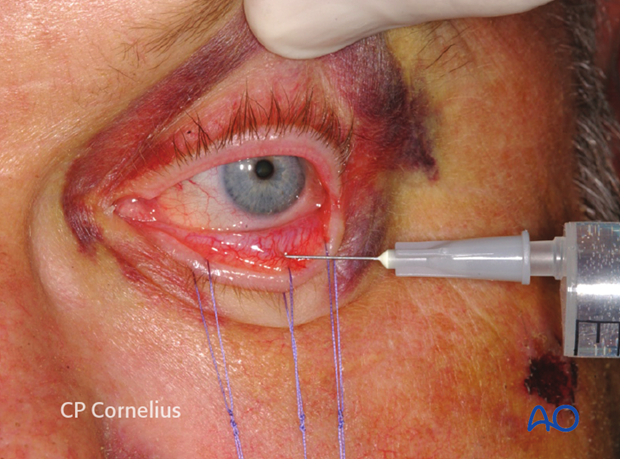
5. Corneal protection
For protection of the globe, ready-made corneal shields can be inserted. Please respect the instructions provided by the different manufactures.
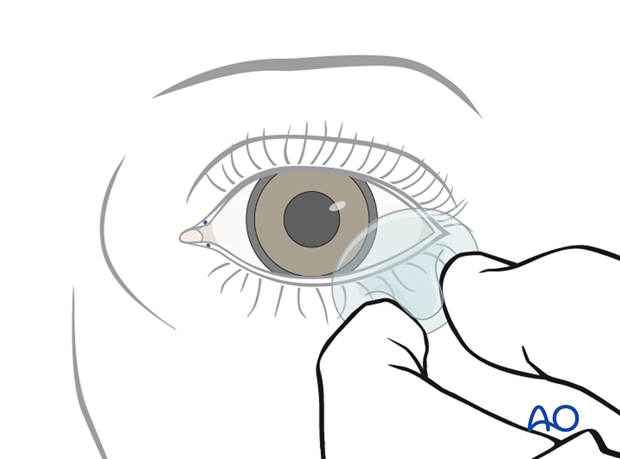
Alternatively, the posterior edge of the conjunctival flap can be sutured to the upper lid margin as soon as the approach to the infraorbital rim has been completed.

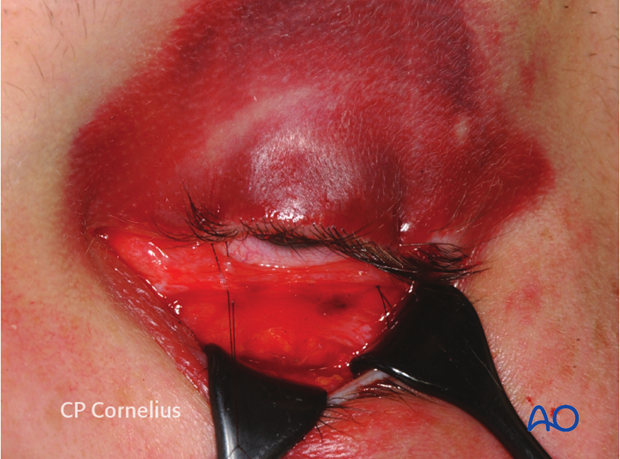
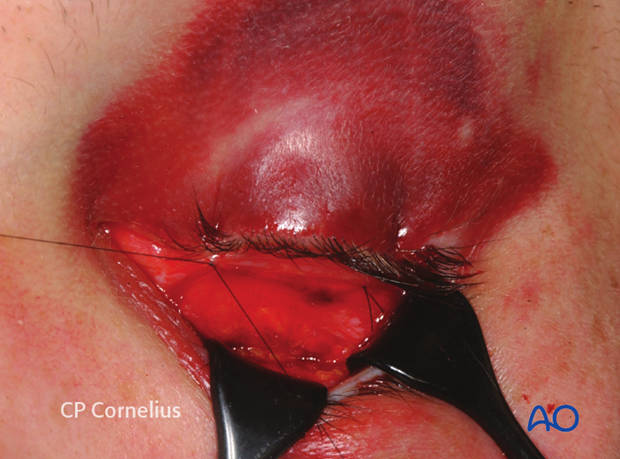
6. Link to detailed descriptions
Follow the links to read detailed step-by-step descriptions of the transconjunctival lower-eyelid approaches:
A) Transconjunctival (inferior fornix transconjunctival using a retroseptal or preseptal route)
B) Transcaruncular (=medial transconjunctival)
C) Transconjunctival with lateral skin extension (lateral canthotomy/”swinging eyelid”)
D) Combination of inferior (A) and medial (B) transconjunctival
E) C-shaped incision (ie, Combination of inferior (A) and medial transconjunctival (B) plus lateral skin extension (C))













